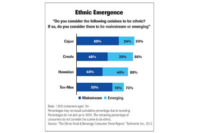Rise of the Red Sauce

Red-colored sauces, specifically tomato-based sauces, are menued more than any other type, according to Technomic’s exclusive menu-tracking database, MenuMonitor. At limited-service restaurants (LSRs), the three most-menued sauces are marinara, barbecue and tomato. At full-service restaurants (FSRs), barbecue, marinara and cream sauces take top honors.
This is evidenced by the numerous red sauce dishes that leading chain-restaurant operators rolled out in the first quarter of 2012. On the limited-service side, Fazoli’s added a sampler dish featuring lasagna marinara, as well as roasted chicken tossed with whole-wheat penne marinara. For its part, Happy Joe’s Pizza & Ice Cream Parlor rolled out a Smokehouse Burger made with “special recipe” barbecue sauce.
On the full-service side, Arizona Pizza Company introduced seven new dishes featuring marinara sauce, including an Italian Chicken Wrap and Fried Ravioli. Meanwhile, Cool Hand Luke’s Steakhouse/Saloon added a BBQ Chicken Sandwich and an appetizer consisting of riblets glazed with Luke’s barbecue sauce.
Other new menu items that go beyond marinara and barbecue sauce include:
• Pasta La Paz—pasta tossed in a spicy roasted-tomato cream sauce (Abuelo’s).
• Meatball Sliders—short-rib sliders simmered in tomato sauce (House of Blues).
• Huevos Divorciados—one egg with red sauce, paired with beef steak (Taquerias Arandas).
Beyond these tomato-based sauces, another type of sauce that often takes a red form is hot sauce; it, too, is popular both with consumers and on menus. In its most recent “Flavor Consumer Trend Report,” Technomic found that hot sauce has mass consumer appeal, with almost eight out of 10 (78%) saying they use it to some extent, and more than a quarter (26%) saying they “love it and use it on a wide variety of foods.” Hot sauce is beloved more in certain regions of the country than others. Consumers in the West and South are much more likely than consumers in the Midwest and Northeast to express the “love it” sentiment.
Technomic has observed many examples of new menu items incorporating hot sauce, including Red Hot Pepper Chicken Noodles at Big Bowl and a Buffalo Chicken Burger at Energy Kitchen. Both illustrate that menu developers are responding to consumer demand for food with a spicy kick.
With this data in mind, food processors and suppliers should look at their own product lines and see where innovations and additions can be made. They should be thinking about ways to offer not only beloved classic sauces, but also more inventive sauces marked by complex and/or ethnic flavors. They could take a cue from brands such as Tabasco, which augmented its line of pepper sauces in 2011 with Buffalo Style Hot Sauce; or Bertoli, whose Vineyard Collection line of pasta sauces includes Fire Roasted Tomato with Cabernet Sauvignon and Marinara with Burgundy Wine. pf
Looking for a reprint of this article?
From high-res PDFs to custom plaques, order your copy today!






